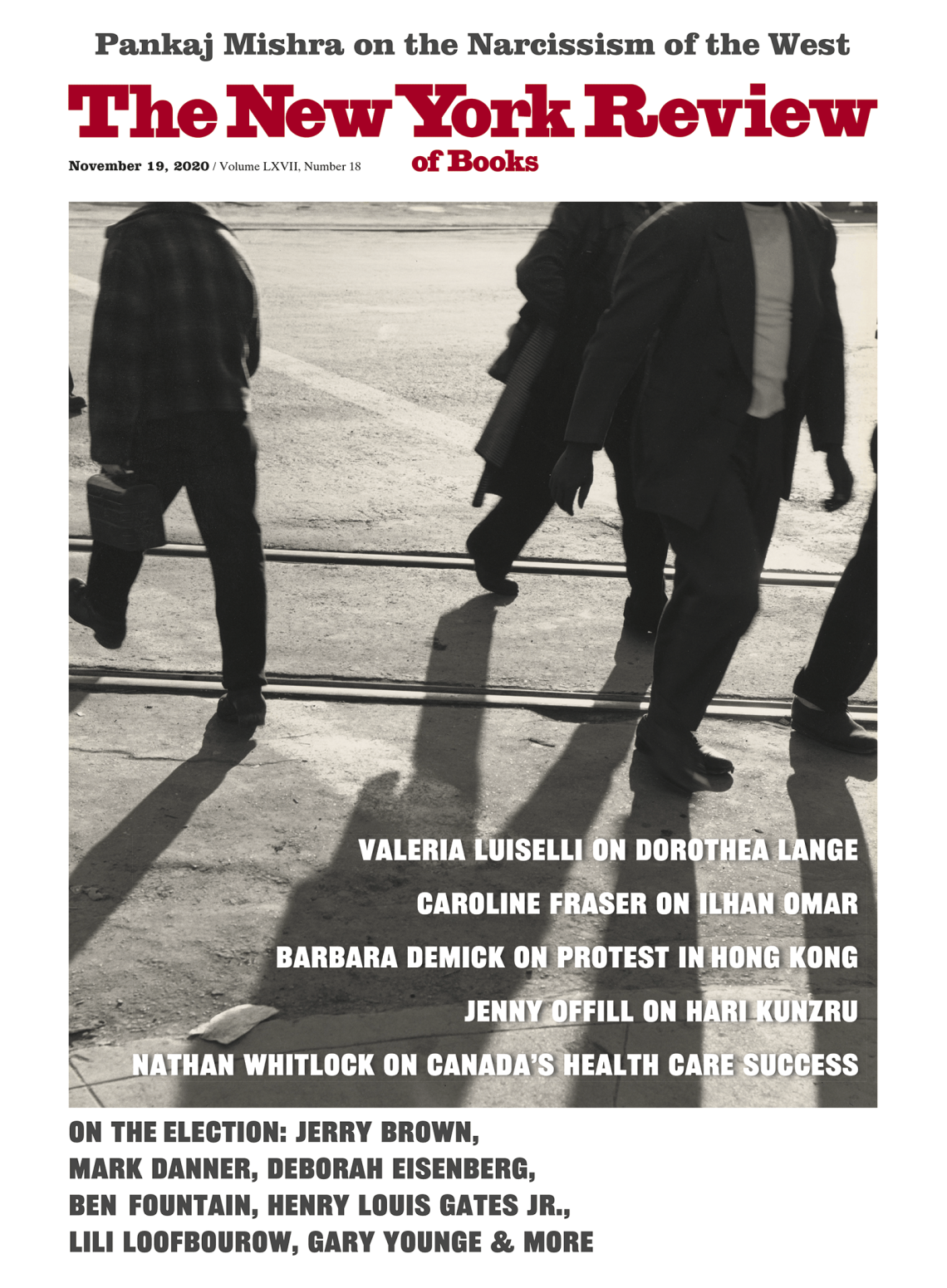In 2017 I went to Washington to see the inauguration. I wandered around with no purpose and did not get very close to the Capitol steps, where the swearing-in ceremony appeared as a tiny cluster of people among a larger crowd. Fewer onlookers gathered in the vicinity of the Reflecting Pool, where the regiments of portable johns shoulder to shoulder outnumbered the humans, and a lone hawk watched from atop a tree. I was standing by a loudspeaker when I heard the phrase “American carnage.” In that relatively abandoned area, it came out of the loudspeaker during Trump’s speech and seemed to hang in the air in 3D.
Millions of words have been written about the phrase since then, but I feel as if I met it in person before it became famous, when it was still as unusual and as worthy of being looked at as the hawk in the tree. I thought it was a weird thing to say, overstated and inept, but not completely disconnected from reality. I write reporting pieces that take me all over the country. I imagined that Trump’s “American carnage” might have been referring to the many unhappy rural places I had seen. (Now I understand that it didn’t really refer to them, or to anything, except the usual invented and chimerical horrors he loves.)
When I’m on the Mall I sometimes have a sense that I’m in all fifty states at once. Hearing the phrase “American carnage,” I thought about small towns in Ohio, near where I’m from, that used to be flourishing and now are half-deserted and boarded up. The Rand McNally Road Atlas, that founding document of American optimism, includes who knows how many small towns across the country that exist today in name only. If you’re expecting to find, say, a gas station in any particular town that’s marked as such by a small dot on the thin line of road, you might be disappointed. It might be only a former town. Or—more often—it will have a gas station–convenience store and nothing else, and you’re grateful for even that. Today the emblematic image of the former small town is a pillar that once held an oval-shaped plastic sign for some local business like a muffler shop or a feed store, and the plastic is mostly broken and gone, and just the frame of the sign is still there.
Once-busy downtowns are vacant or occupied by thrift stores and studios that teach martial arts. Sometimes you find a historical society museum that’s open by appointment, and if you call the number on the door a jovial elderly resident will come from a house nearby and tell you about all the businesses that the town used to have, usually including two movie theaters. The town’s school is closed, and the few school-age kids who remain take a long bus ride to a consolidated school elsewhere.
In Nebraska I walked the main street of a former town district where the street and the curbs and the lines for angle parking were still there, but the rest of the place was just foundations and neatly tended grass. In western Kansas I drove through a boarded-up town with a sign along the highway asking passersby to pray for the town. Every county has a county seat. In those towns you used to be able to depend on finding at least one functioning motel. Nowadays you’d better be ready to drive on, because the one motel may be closed, with its signboard saying something like, “For Sale Make Offer Perfect Business Opportunity for Retired Couple.”
When you do drive on, the road is terrible. It’s been flooded, and the pavement has buckled, and you’re going past still-flooded fields with wheeled irrigation pipes up to their spokes in standing water. Or the road is apparently OK, but after a few miles you realize that it’s crumbling at the seams between the blocks of pavement, and every forty feet you hit a seam that makes a bump, and the road bumps beneath you like that for hours as you cross some out-of-the-way part of the state. The billboards advertise injury lawyers or warn of the dangers of crystal meth, with photos of addicts with purple teeth. The radio is filled with grievance—Rush Limbaugh is the best-known of the right-wing angry guys on the airwaves, but there are also lesser-known regional ones. Confederate flags, no longer flying at state houses and NASCAR races, proliferate along some of the less-traveled roads in the backcountry.
Out on the Great Plains, where towns are even farther apart and farmhouses stand more alone, rows of old, wind-bent trees sometimes follow the fence lines for miles or protect the houses on the windy side. Some of the trees are probably survivors from the Shelterbelt Program of the 1930s, when the federal government promoted the planting of tens of thousands of trees to keep the fields from blowing away. Alongside gravel roads that run to the horizon, sometimes you see rows of telephone poles with just a few lines on them. The installation may date back to the early days of the Rural Electrification Administration, which began in 1935 as a nationwide effort to bring electric power to the farthest-flung places. These New Deal–era programs helped keep rural communities alive.
Advertisement
Our system was designed to make it difficult to win a national election by winning only the cities. Rather than complaining about the unfairness of the Electoral College, and how it gives preference to states with few people, the Democrats could acknowledge that it’s here for at least the time being. They could start to pay more attention, FDR-style, to the less populated places. Who knows? Someday that attention might even bring in an extra electoral vote or three. The country once did a better job of looking after rural America. Judging just by what anybody driving around can observe, much of it is hurting right now.


